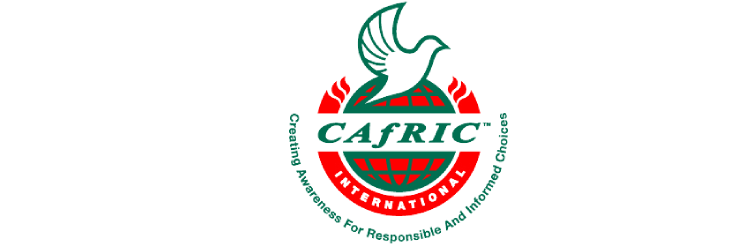It is said that “Old is gold”, and this may just be the case for the commonly used phrase, “Protection is better than cure”. As cliche as this long-time phrase is, my experience inclines me to believe that there may be value and truth to it, and perhaps we could borrow from this wisdom in our approach to address mental health and behavioral challenges that we are experiencing among youth in Kenya today.
According to the World Health Organization (WHO), it is incredibly crucial to focus on mental health prevention and mental health promotion to minimize the financial, emotional and mental burden associated with mental health disorders. Mental health prevention involves “intervening to minimize mental health problems by addressing determinants of mental health problems before a specific mental health problem has been identified in the individual, group, or population of focus with the ultimate goal of reducing the number of future mental health problems in the population.”
Mental health promotion on the other hand “encourages and increases protective factors and healthy behaviors that can help prevent the onset of a diagnosable mental disorder and reduce risk factors that can lead to the development of a mental disorder.” Mental health promotion also incorporates creating healthy living conditions that support and encourage people to adopt and maintain healthy lifestyles.
Mental health promotion can be modeled to follow WHO’s historical public health concept of disease prevention i.e. Primary, Secondary and Tertiary. I came across a hypothetical story, which I feel has done a pretty good job at illustrating how this health promotion model may look like in real environments, and offers insights to mental health professionals like myself, on why we probably need to change our approach if we want to see a positive and sustainable change in youth mental and behavioral health.
The story explains a scenario where a steep cliff exists at a local village. Every so often, there is a report on the news about a person falling down the cliff, getting critically injured and/or dying from the injuries.
Imagine that you are the leader at the local public health department, and the public is demanding immediate action to prevent further injury and death. How would you address this?
In this case, the author predicts a response, based on status quo.
- At the Tertiary level, you may mobilize a team of first responders like the local ambulances, nurses and/ or doctors to provide immediate first aid and swift transportation to the nearby hospital for urgent treatment and to prevent death from the injuries. While this action is noble, more people keep falling off the cliff, and the emergency responders and the local hospitals start to feel overwhelmed. The residents now demand more money to recruit more responders and/or expand capacity at the local hospitals.
- At the Secondary level, you evaluate interventions at the tertiary level, and find out that this is a bit too expensive and realize it may not be sustainable. You therefore decide to put up a barrier at the top of the cliff that might prevent people from falling down the cliff and injuring themselves. Still this intervention feels great, and in the short-term, it seems to work. However, the relief is short-lived, as breaking news now report that over one hundred people are reported to have fallen down the cliff, several lives were lost, and a significant number of them are injured. Upon investigation, it is discovered that the barrier erected at the edge of the cliff actually worked contrary to the plan as it attracted those who were initially afraid to come to the edge of the cliff and catch a glimpse of the view below, as they now felt safer with the barrier, but unfortunately the weight of all the people leaning on the barrier tipped it off, and several people are now injured and/ or dead.
Once again, there is a loud public uproar, the national government is involved, your entire office is under police investigation, and people demand your resignation.
- At the primary level, when you are now frustrated by the lack of acknowledgment and appreciation of your efforts, and the risky and poor choices of all these people who keep coming to the cliff and risking their lives, you ask yourself, why do these people come to the edge of this cliff in the first place? What is it that they are so eager to see below?
Aha!! This is a great question, but you don’t have the answers.
Desperate to find answers, you decide to engage stakeholders. You speak with the local residents, their local government representatives, and those who have survived the falls, to understand why and what people come to do at the edge of the cliff.
While this is undeniably time consuming, the feedback and ideas you get from those directly affected by these injuries and deaths provide insights and a direction to a seemingly permanent solution to this problem. For once, you realize and acknowledge that the cliff isn’t the problem, and besides your previously failed attempts to minimize the risk and prevent deaths, there is nothing much you can actually do to the cliff. With this new wisdom, your focus shifts away from the cliff, to the thoughts and behaviors of those who have fallen, or who keep coming closer to the edge.
As you experience this shift in perspective, the same happens to your approach. It dawns on you that you should work on moving people away from the edge of the cliff, and warning those who may risk coming to the edge of the cliff, on the imminent danger and risk for critical injury and or death. Luckily, the local residents and all those affected are now working with you toward this promising solution.
The mental health and behavioral challenges we are facing as a nation can be equated to this steep cliff that exists in our families, our schools or institutions and even in our communities.
Regrettably, the risk for critical injury and or death from a fall off the cliff is not just reserved for the youth, anyone of us is at risk, depending on how far away from the cliff we are, and how much weight is placed on the barrier that is expected to protect us from falling. The degree of risk, for any one of us, just like in the story, is directly proportional to the knowledge we have about the dangers of going close to the edge of the cliff. It is this knowledge that can facilitate our decision to either not lean on the barrier, or even better, stay away from the edge of the cliff all together.
What has seemingly become cliche may be the catalyst to the change we all so desperately desire. Speaking of cliche’ “Knowledge is power”, is another aged three-word wisdom that we have neglected in our discourse around solutions to social problems. While we have adopted science, and all its advances for solutions to medical problems; the same is not true for mental health and behavioral problems. Tons of evidence exists on the direct relationship between trauma (early childhood and adult trauma); unresolved grief and loss; relationship injuries; and mental health and substance use disorders.
While no one can claim immunity to these life altering experiences, many of us perhaps recognize that what we may have experienced as children or are experiencing in our lives today is not right, and perhaps has an influence on who we are, how we think or feel, what we believe, and ultimately how we behave or relate with others and the world. However, since no one is interested in talking about it, we have learned to soldier on, each one of us coping the best way we can, with whatever makes us feel the best we can, and in the process, consciously or subconsciously , we continue to hurt, ourselves and others, until the uproar is loud enough to demand change. Unfortunately, for many of us, still, as much as positive change is desired, the focus is often on our behavior, not our experience. The same way it was initially for the cliff versus the people falling off of it.
Going back to the story, the interventions at the Primary level made the local residents feel empowered to take ownership of their risk and to advocate against anyone living or going near the cliff. It became their responsibility to keep themselves, their loved ones and their community safe. As their leader, you are now hailed as a life savior and a great leader, not because of the lives you saved, but because of all the lives you protected. Although this was a hypothetical story, this is a sustainable investment, and perhaps how social problems should be addressed.
If we can learn anything from this story, we might consider to involve those infected or affected, and in the same way, with the same health promotion model, empower them to identify the root causes of their problems, and find lasting solutions. Mental health, substance use and high risk behaviors are social problems affecting our communities in Kenya. While treatment facilities play a significant and life saving role to those in urgent need; it is quite expensive and a significant number of people require treatment more than once.
As such, perhaps the most impactful and sustainable investment to permanently address these challenges in Kenya is to engage with and empower all those at risk, ironically, it is all of us, through education and awareness about the known threats to healthy child development and adult coping. By doing so, we can make informed and healthy choices in our lives, our loved ones and in our communities to prevent and mitigate the risks.
Irene Njoroge, MPH, BScN, RN, CARN
Founder/Clinical Director
CAfRIC Centre Kenya






